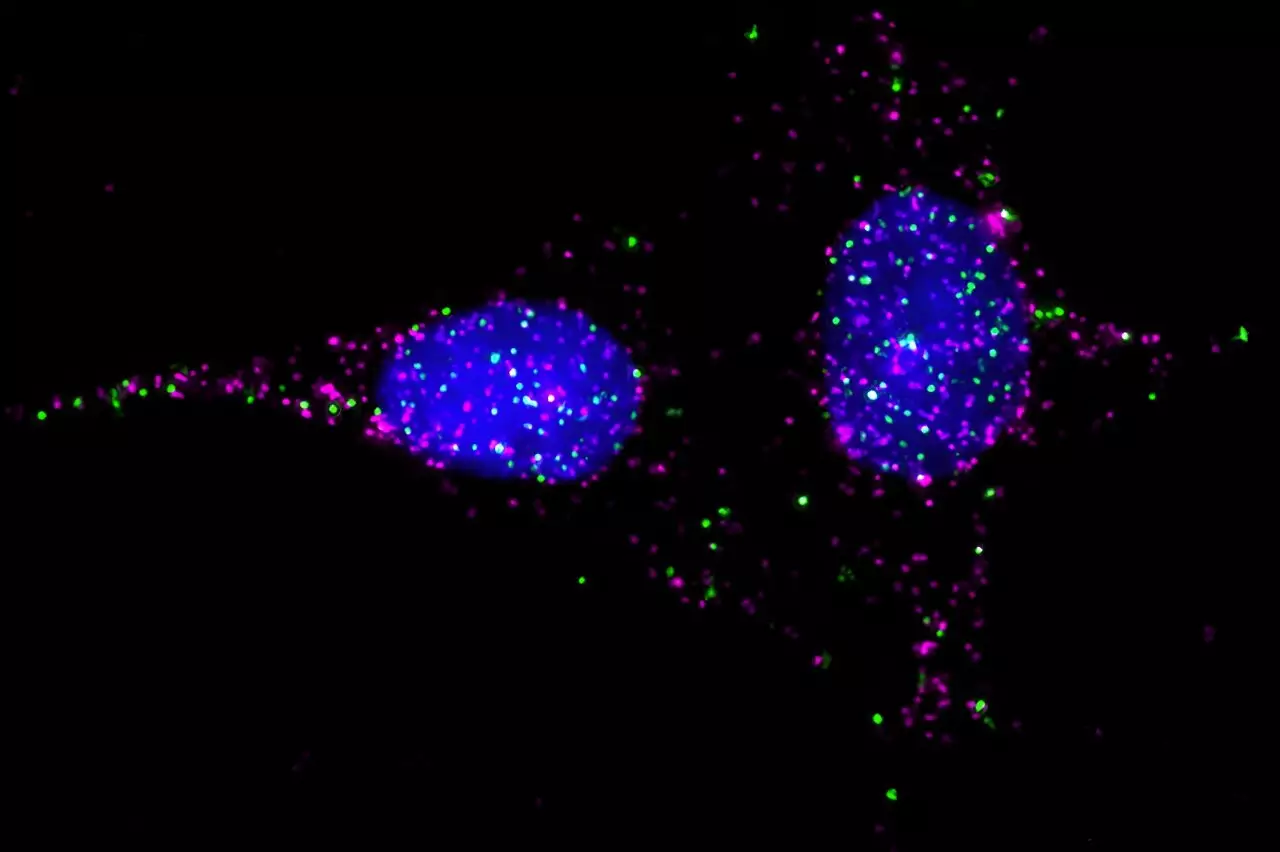G protein-coupled receptors (GPCRs) represent a significant class of proteins that are crucial for cellular communication and are the targets of around one-third of all FDA-approved medications. These receptors facilitate a myriad of physiological responses, ranging from cardiovascular regulation to immune responses. The pharmacological landscape dominated by GPCRs is well-known, yet the intricate relationships between these receptors and their associated proteins—particularly receptor activity-modifying proteins (RAMPs)—remain an area ripe for exploration. Recent studies have revealed that the interactions between GPCRs and RAMPs are not just incidental but foundational to understanding the pharmacodynamics of a significant number of therapeutic agents.
A groundbreaking study published in *Science Advances* has advanced our understanding of GPCRs and their associated RAMPs by mapping the interactions of 215 different GPCRs with three known RAMPs. This research extends the existing knowledge of how GPCRs collaborate with RAMPs, unveiling a previously underappreciated complexity that could reshape both fundamental biology and pharmacology. The work conducted in the lab of Thomas P. Sakmar illustrates a pressing need for comprehensive interaction maps, providing essential data about how drugs interact at a molecular level.
The findings from this study suggest that GPCRs rarely operate in isolation, and their functionality can vary widely depending on the presence of specific RAMPs. This revelation is monumental in drug development, as it implies that the effectiveness of a drug is contingent not just on the target receptor but also on the cellular context defined by the associated RAMPs.
The operational challenge of analyzing hundreds of GPCR-RAMP interactions was formidable. To address this, the research team pioneered an innovative high-throughput assay that allowed them to screen for GPCR-RAMP interactions in a systematic way. By utilizing antibodies linked to color-coded magnetic beads, the team could rapidly identify which receptors were interacting with which RAMPs, significantly streamlining the process of building a comprehensive interaction map.
This multiplexing approach is one of the study’s most critical advancements, allowing researchers to conduct up to 500 experiments simultaneously. Such technological empowerment enables a much richer dataset, helping pinpoint the cellular mechanisms governing drug interactions and offering insights into why certain promising compounds may fail in clinical trials.
The implications of this research extend well into the realm of drug discovery and development. Understanding GPCR-RAMP interactions could revolutionize how researchers approach the design of new medications. It could potentially lead to the identification of novel drug targets and provide explanations for the behavior of pre-existing drugs that have not achieved their expected clinical outcomes.
Moreover, the creation of publicly available online resources such as libraries of anti-GPCR antibodies, engineered GPCR genes, and the mapped interactions, constitutes a foundational tool for future research. These libraries not only facilitate easier access to essential reagents but also foster collaborative efforts among researchers globally. The study contributes to democratizing information, making crucial data accessible to both established laboratories and emerging researchers in the field.
While the study lays a solid foundation, there are numerous avenues for further exploration. Understanding the full scope of orphan GPCRs—those whose natural ligands are unknown—can only be accomplished through additional research into this receptor family and their interactions with various RAMPs. Future studies will also need to delve deeper into the functional consequences of these interactions, elucidating how they influence cellular signal transduction and therapeutic efficacy.
The journey is not devoid of challenges. Integration of this complex data into meaningful biological applications will require continued collaboration between chemists, biologists, and pharmacologists. Additionally, innovative methodologies will need to evolve alongside this burgeoning field to keep pace with the rapid advancements in our understanding of cellular signaling.
The recent insight into GPCR-RAMP interactions marks a pivotal moment in pharmacological research, providing clarity in a historically opaque domain. The exploration of molecular partnerships at a level previously unachievable promises significant improvements in drug development, bringing forth the potential for more targeted therapeutics. As researchers harness the power of technological advancements to decode the complexity of these interactions, the future of drug discovery looks increasingly bright, holding the promise of more effective and tailored treatments for a myriad of diseases.

